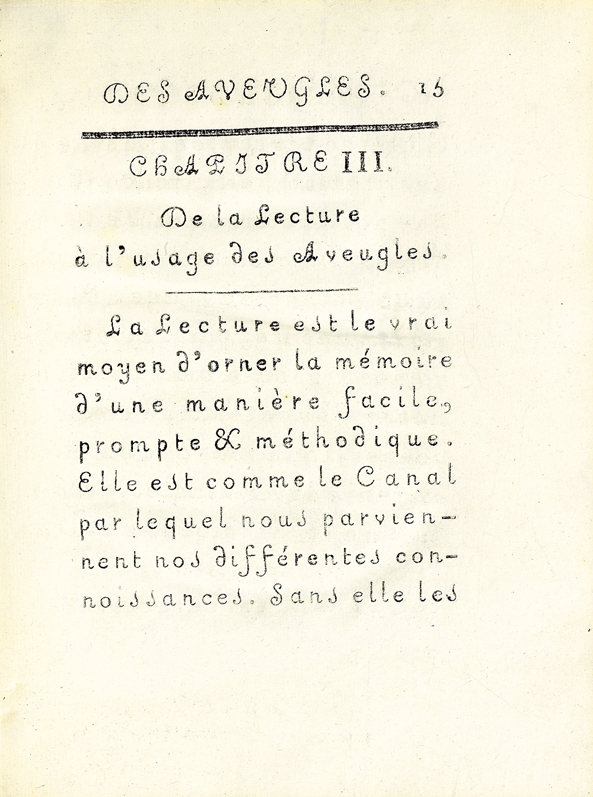Paris, Imprimé par les Enfans-Aveugles, sous la direction de M. Clousier, Imprimeur du Roi, 1786.
4to [246 x 190 mm], (1) bl.l., vii pp., (1) p., pp. 1 to 111 printed with embossed characters, pp. 113 to 126, 15 pp., (1) l., (11) ff., (1) l. of observation, (3) ff. with the « Programme des exercices que les enfans-aveugles feront à Versailles » devant le roi, (3) ff., (1) bl. l. Bound in contemporary full marbled calf, spine ribbed, edges red. Binding skilfully restored.
Rare first edition of « the first printed book intended to be rêd by the blind ». GM 5833; Lende p.15; PMM 292; En Français dans le texte 242; Norman 1023.
Valentin Haüy (1745-1822) wanted to make the blind rêd. In 1784 he crêted special characters that produced a raised typography. In 1786 he published the present work to expound his revolutionary method to educate the blind. The present book was printed by blind children with embossed letters.
« Valentine Haüy was the first to devise type that could be rêd by the blind. Characters slightly different in shape from ordinary italic were embossed on hêvy paper to be rêd with the fingers. He founded the Institut Royale des Jeunes Aveugles in 1785 and seems actually to have succeeded in têching some of his pupils not only to rêd by this method but to set and print the embossed type. His ‘Essai sur l’Education des Aveugles’, 1786, is an incunable of the method”. (PMM 292).
A good copy of this important work for the history of science, a work that symbolizes the philanthropic outburst to the underprivileged classes in 18th century France.
See less information


